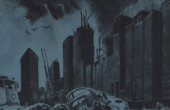Beyond the “Nuclear Umbrella”: Rethinking European Defense After the Russia-Ukraine War

February 24, 2024, marks the second anniversary of the full-scale Russian invasion of Ukraine. The war seems endless today. Both sides are dug into trenches on the front where they fight over scraps of land and devastated cities. The return of massive ground warfare in Europe in the 21st century raises questions about future Western relations with Russia. It also raises concerns about post-war Ukrainian and Western European security. The conventional wisdom is that Ukraine will be safer once it joins the North Atlantic Treaty Organization (NATO) to shelter under the U.S. nuclear umbrella, as long as it retains major U.S. and Western European financial, military, and diplomatic support.

But what if this conventional wisdom is wrong? In his article “A ‘Nuclear Umbrella’ for Ukraine?,” which appears in the forthcoming issue of the journal International Security, Matthew Evangelista, President White Professor of History and Political Science in the Department of Government at Cornell University, offers valuable insights regarding European security post-Russia-Ukraine war. He argues for a new, safer approach to European security after the end of the devastating Russia-Ukraine war.
“Extended nuclear deterrence is not up to the task. It remains a costly and risky approach to Russian aggression,” Evangelista argues. This strategy, he writes, “stakes too much on the hope that Putin (or his successors) would refrain from actions that could provoke nuclear retaliation — even after he has ignited the biggest armed conflict in Europe since World War II and continues to menace NATO members with the threat of nuclear attack.”
The security threat from Russia is indisputable. Countering it is drawing renewed attention from scholars and practitioners. Evangelista’s article, which we discuss below, offers a new lens through which to examine European security dynamics and potential pathways forward.
Could you give us a brief overview of your article?
The article examines prospects for Ukrainian and European security once the current war with Russia ends. It draws on the history of the Cold War for two purposes: to question the claim that the threat of retaliation with U.S. nuclear weapons prevented a Soviet invasion of Europe after World War II; and to investigate the potential for applying strategies of non-offensive conventional defense, which emerged as an alternative to nuclear deterrence during the 1980s, to the Ukrainian and broader European situation.
Would expanding NATO to Ukraine’s eastern border provide adequate security? Or should alternatives to nuclear deterrence — many of them studied and advocated during the Cold War itself — get a new hearing? The history of the Cold War offers a number of alternative possibilities for pursuing security through a mix of non-offensive conventional military means and nonviolent civilian resistance. I argue that they are worth updating for Europe’s present and future.
Whatever the outcome of Russia’s war against Ukraine, in its wake Ukrainians will need to choose a security policy to defend their sovereignty from future threats. Their choice holds implications for broader European security.
What is the conventional wisdom on this subject?
The conventional wisdom on the history is that nuclear deterrence has preserved world peace, and, in particular, prevented a Soviet invasion of Europe during the Cold War. Implications for the future vary. Some argue that Ukraine should join NATO and come under the protection of the U.S. “nuclear umbrella” in what is known as “extended nuclear deterrence.” Others, who consider Ukraine’s membership in NATO politically impossible or strategically unwise, advocate a major buildup of Ukraine’s conventional armed forces to prevent another potential Russian attack.
What’s wrong with that argument?
The conventional wisdom on nuclear deterrence is wrong on two counts. First, despite claims by NATO officials that nuclear deterrence “has been essential to keeping the peace in Europe and North Asia for over 70 years,” it did not prevent Russia’s massive invasion of Ukraine and offers no guarantee of deterring future Russian aggression against vulnerable NATO territory, such as the Russian-majority city of Narva on the border between Russia and Estonia (a NATO member that U.S. politician Newt Gingrich once described as located “in the suburbs of St. Petersburg”).
The reliance on nuclear weapons for European defense provides no guarantee of security and courts disaster.
Second, the claim that nuclear deterrence worked during the Cold War to prevent a Soviet invasion was never tested. What the late Robert Jervis, one of the leading scholars of international relations, wrote more than 20 years ago remains true today: “The Soviet archives have yet to reveal any serious plans for unprovoked aggression against Western Europe, not to mention a first strike against the United States.” Rather than deter an action that Soviet leaders never intended, the emphasis on nuclear weapons in NATO defense policy — at one point more than 7,000 so-called tactical nuclear weapons were deployed by NATO forces on the continent, and even more on the Soviet side — heightened the risk of escalation to nuclear holocaust during crises. The article examines the case of the standoff over the status of West Berlin in September 1961 to demonstrate this danger. U.S. plans to engage in “selective” nuclear strikes if NATO forces were denied access to the city would — according to declassified Soviet war plans — have triggered a massive preemptive Soviet nuclear attack. Then, as now, the reliance on nuclear weapons for European defense provides no guarantee of security and courts disaster.
What is your argument and why is it better?
Promising alternatives to nuclear deterrence emerged during the Cold War. European peace researchers promoted non-nuclear defense strategies that depended on restructuring conventional forces into robust, decentralized, defensive configurations that would not constitute tempting targets for nuclear attack. By foreswearing offensive capabilities, the reconfigured forces would not threaten the other side. They would avoid exacerbating what Jervis called the “security dilemma” — when measures taken by a status quo power to defend itself could be interpreted as threatening by its adversary. These non-offensive or non-provocative defense strategies caught the attention of the reformist Soviet leader Mikhail Gorbachev. In December 1988 he announced a unilateral reduction of half a million Soviet troops, withdrawal of offensively oriented tanks and other military equipment from central Europe, and a defensive restructuring of the Soviet Army. The initiative marked a turning point that led to further conventional and nuclear disarmament and ultimately the end of the Cold War.
Rather than risk nuclear escalation, postwar Ukraine should endeavor to make a Russian conquest untenable and too costly.
Recently German scholars have revived proposals for non-offensive defense, now termed “confidence-building defense,” as an approach suitable for Ukraine and NATO to adopt once the current war with Russia ends. The proposal known as “spider in the web” looks particularly promising, as it would entail sensors and barriers to slow a Russian invasion (the web), supplemented with mobile combined-arms units (the spider) to attack the trapped Russian forces. Its defensive orientation would alleviate the security dilemma that some claim contributed to Russia’s 2022 invasion and provide a more stable post-conflict environment.
Aside from the use of animal metaphors, the spider-in-the-web defense shares some elements with Franz-Stefan Gady’s proposal to turn Ukraine into a “bristling porcupine.” As he describes, “an ideal porcupine strategy is built around the assumption that the defender’s sharp quills can inflict enough pain on the attacker to convince him that he will not attain his goals on the battlefield.” Ukrainian forces, although not necessarily more numerous than Russian ones, would be designed such that “any attack would meet continuous ambushes, counterattacks, and hits by long-range artillery and missiles. Then, when the attacking Russians are already severely depleted, the bulk of Ukraine’s well-armed, well-trained force would push back or destroy the invaders. It is a porcupine strategy with a hammer blow at the end.”
Is the “security dilemma” you mentioned really relevant to this situation?
It may seem odd to invoke the concept of the security dilemma and seek to reassure a country — Russia — that has already engaged in massive military aggression. But a long-term, reliable peace for Ukraine and Europe will require addressing the legitimate security concerns of both Ukraine and (ideally) a post-Putin Russia. Threatening nuclear retaliation is not the way to do it. Rather than risk nuclear escalation by linking its security to a promise from the United States to use nuclear weapons in its defense, postwar Ukraine should endeavor to make a Russian conquest untenable and too costly. The combination of direct defense of the threatened territory and mass civilian-based nonviolent resistance could serve to deter future aggression. If the current war ends with a territorial compromise rather than complete liberation of Ukrainian territory, a strictly defensive Ukrainian military posture will provide little pretext for a renewed assault by Russia. The proposed strategy would offer the prospect of security — without risking the potential disaster inherent in the “nuclear umbrella.”
Jacqueline L. Hazelton is the executive editor of the journal International Security.
Matthew Evangelista is President White Professor of History and Political Science at Cornell University. His article “A ‘Nuclear Umbrella’ for Ukraine?” appears in the Spring 2024 issue of International Security.


